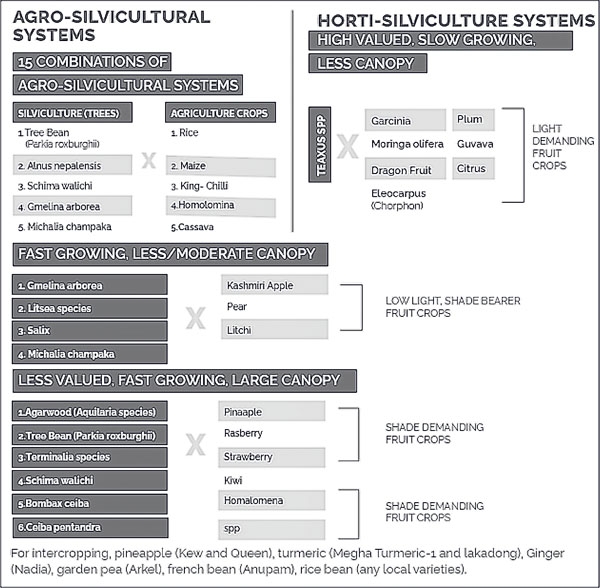Harnessing agro forestry for sustainable agriculture in Manipur
|

N Ganesh and Dr Vivek Vaishnav
In the verdant hills of Manipur lies a golden opportunity for agricultural innovation and economic resurgence: agroforestry. Imagine a landscape where lush trees dance in harmony with bountiful crops, promising not just sustenance but prosperity for generations to come. This is the vision that beckons us as we explore the transformative power of agroforestry in the heart of India’s North East.
Agroforestry, a holistic farming approach integrating trees with crops, stands as a beacon of hope for sustainable agriculture, ecosystem restoration, and economic upliftment of farmers. With its multifaceted benefits, the practice has garnered attention worldwide.
In India, under the recommendation of NAP policy, the Sub Mission on Agro forestry (SMAF) was launched in 2016-17 to promote tree plantation on farmland with the motto of “Har Medh Par Ped”, along with crops/cropping system to help the farmers to get additional income and make their farming systems more climate resilient and adaptive. Since the inception of the scheme in 2016-17, a total area of 1.21 lakh hectares has been covered under plantation, with a total number of 532.30 lakh trees planted. Ministry of Agriculture and Farmers Welfare (MoA & FW), through SMAF, promotes agro forestry plantation on farmland irrespective of forest cover.
In Manipur, the SMAF was initiated by the Soil and Water Conservation division (I) of the State Forest Department, the Government of Manipur, in 2021 to introduce suitable agro forestry models with combinations of trees and crops for the region with different soil types and altitude gradients in Manipur, learning from the experience of the traditional farmers.
Amidst the backdrop of Manipur’s rich biodiversity and fertile soil, the seeds of agro forestry have found fertile ground. In Ukhrul, pioneering farmers have woven a tapestry of kiwi, oranges, and tree tomatoes alongside traditional crops, reaping not only financial rewards but also sowing the seeds of entrepreneurship. Their success is a testament to the untapped potential lying dormant in our hillsides.
Yet, as we journey beyond Ukhrul, we encounter a landscape marked by challenges and opportunities alike. The journey towards widespread agro forestry adoption is fraught with obstacles: historical farming practices entrenched in tradition, policy complexities that confound even the most seasoned policy makers, and the daunting task of navigating fragmented markets.
To unlock the full potential of agro forestry in Manipur, comprehensive policy reforms are imperative. A dedicated agro forestry policy, aligned with land use and natural resource management strategies, is crucial. This policy may prioritize Government investments in infrastructure and provide long-term financial support for tree maintenance. Additionally, addressing owner- ship disputes over forest lands and integrating agro forestry into existing agricultural and forestry policies are essential steps.
But policy alone is not enough. We must also nurture a culture of collaboration and innovation, forging partnerships between Government projects and private startups to bridge gaps in infrastructure and market access. The establishment of a Forest Corporation dedicated to agro forestry products could serve as a linchpin, connecting farmers with markets and ensuring that the fruits of their labor reach far and wide.
As we embark on this journey towards a greener, more prosperous Manipur, let us not forget the guiding principles that have brought us thus far: resilience, determination, and a steadfast commitment to building a brighter future for all. Together, let us cultivate a landscape where trees and crops stand as pillars of prosperity—a testament to the indomitable spirit of Manipur.
Furthermore, fostering collaboration between Government projects and private startups can bridge existing gaps in nurseries and marketing channels. Establishing a forest corporation dedicated to agroforestry products can streamline supply chains and boost market access for farmers.
In the hills of Manipur, amidst the whispers of the wind and the rustle of leaves, lies a promise—a promise of abundance, of prosperity, and of a future where agro forestry reigns supreme. It is up to us to seize this opportunity, to nurture this promise, and to cultivate a legacy that will endure for generations to come.
N Ganesh is IFS (DFO/Imphal) and Dr Vivek Vaishnav is (HoD, Forestry, Manipur University) and can be reached at ([email protected]; [email protected])

